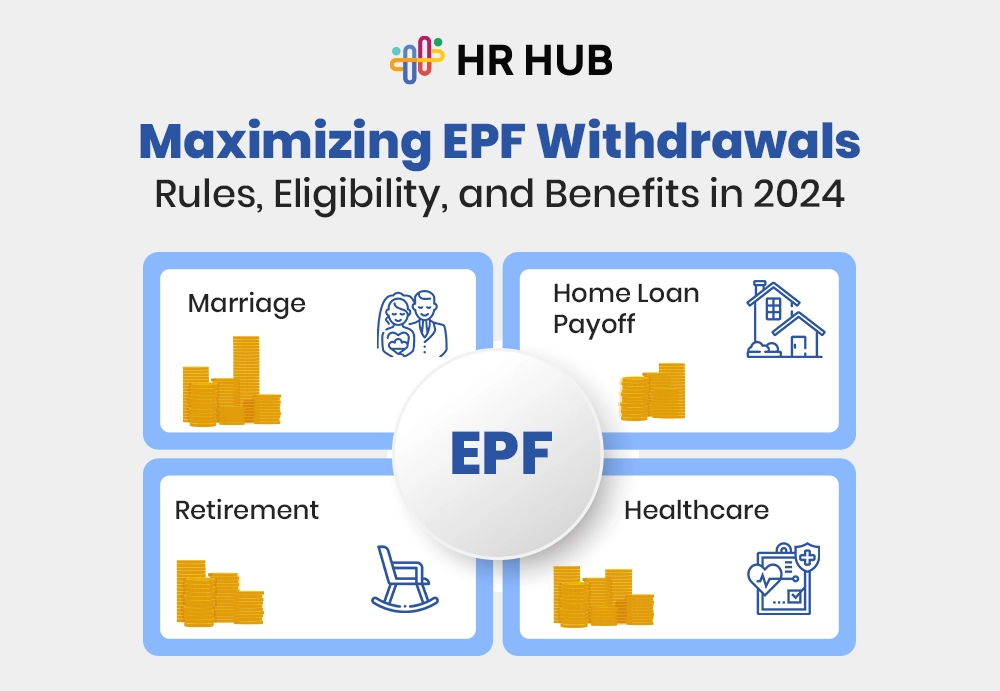Have you ever looked around your office (or Zoom grid) and thought, “Everyone’s working…” But why aren’t we moving faster?
That’s the catch. Hard work doesn’t automatically translate into high performance. And it’s not your team’s fault. In most cases, it’s a missing link—an invisible gap between daily effort and meaningful output. A gap caused by unclear expectations, scattered feedback, and a lack of direction.
That’s where a performance management system steps in—not as a corporate surveillance tool, but as an employee growth engine.
In the evolving world of work, where remote flexibility and autonomy are increasing, organizations need structured systems to empower, not control, productivity. So, how exactly does a performance management system make your people not just work harder, but smarter?
Let’s unpack that in detail.
1. Turning Vision into Action: The Power of Strategic Goal-Setting
Everyone talks about aligning employee goals with business objectives—but how often does that happen?
In many companies, goal-setting is rushed through during annual reviews and then forgotten. Employees either don’t remember their goals or, worse, don’t know how to track progress.
However, in a performance management system, this process becomes a living, breathing, and dynamic one.
- Goals are clear, measurable, and time-bound.
- Employees can view their progress on dashboards.
- Managers can track alignment with team OKRs or key performance indicators (KPIs).
- Adjustments can be made mid-quarter based on changes.
For instance, a sales executive doesn’t just get a goal like “close more deals.” Instead, they get
"Achieve a 15% increase in qualified leads per month through client referrals and partnerships."
When goals are that specific, motivation increases, and so does ownership. This is the beginning of a strong performance management program, where people don’t guess what success looks like. They see it, measure it, and chase it.

2. The Feedback Shift: From Annual Reviews to Real-Time Growth Loops
Remember the dreaded once-a-year review?
Employees walk into a conference room, receive vague feedback on the past 12 months (half of which they barely recall), and walk out with either a number or a generic “needs improvement.”
Now contrast that with this:
- A designer shares a new ad concept.
- Within 24 hours, their manager leaves constructive feedback through the performance management system:
“Great use of color psychology. Let’s A/B test this layout and see if CTA engagement improves.”
This is a real-time, meaningful, and growth-focused approach. It motivates, clarifies, and steers people in the right direction.
Modern performance management processes incorporate:
- One-on-one meeting logs
- Peer and 360-degree feedback
- Weekly performance reflections
- Private notes and coaching suggestions
The result? No surprises during evaluations. Employees always know where they stand and how to improve.
3. Driving Accountability Without Breeding Micromanagement
Many managers struggle with a tightrope walk: How do you keep employees accountable without constantly hovering?
A performance management system solves this tension. Instead of over-monitoring people, it creates a shared space where accountability is embedded.
- Dashboards show individual and team progress.
- Milestones, deadlines, and blockers are transparent.
- Conversations shift from “what are you doing?” to “how can I help you move forward?”
It’s not micromanagement. It’s empowered ownership. And when employees feel trusted but supported, they naturally take initiative.
4. Recognizing Performance—With Data, Not Bias
Let’s be real—performance recognition often favors the most visible, not necessarily the most valuable.
Loud performers, social butterflies, or those who over-report their accomplishments often get more attention. Meanwhile, the quiet, consistent contributors are overlooked.
A data-backed performance management program makes that change.
With standardized performance metrics, real-time goal tracking, and peer inputs, recognition becomes objective.
- An analyst who delivers precise insights ahead of time consistently can be flagged for rewards.
- A remote team member who improved customer retention gets noticed even if they rarely speak up in meetings.
Recognition isn’t random anymore—it’s earned, visible, and motivating. And when people see that effort is noticed, they give more of it.
5. Creating a Culture of Continuous Development
One of the most profound impacts of a performance management system? It nurtures a growth culture.
Instead of performance being a checkbox exercise, it becomes:
- A conversation about strengths, skills, and aspirations.
- A feedback loop that improves communication across levels.
- A development roadmap that outlines learning goals and future roles.
Let’s take an example:
A junior marketer receives ongoing feedback, sees their performance patterns, and is nudged toward training in digital analytics. They enroll in a course, apply their learning to the next campaign, and their impact skyrockets.
Without a system that maps performance to development, that potential might have gone untapped.
This is the heart of a successful performance management process: developing people continuously, not evaluating them occasionally.

6. Transparency That Builds Trust (and Reduces Attrition)
According to Gallup, one of the top reasons employees quit is a lack of clarity around performance expectations.
A well-implemented performance management system removes this ambiguity.
- Employees know exactly what is expected.
- Managers can track whether goals are realistic or need to be rescaled.
- Leadership can spot skill gaps before they become team-wide bottlenecks.
Transparency isn't just an HR metric—it’s a retention strategy. When people know how they’re performing, what success looks like, and what support they’re getting, they stay.
And they perform.
7. Elevating Managers from Taskmasters to Coaches
The best managers don’t manage people—they coach potential.
Modern performance management programs give managers the tools to:
- Track behavioral and outcome-based performance
- Give tailored, timely feedback.
- Suggest learning paths and growth tracks.
- Run structured one-on-ones that are productive, not awkward.
This shift from “Did you do this?” to “How can I help you grow?” is at the core of employee productivity.
Because at the end of the day, a great coach brings out more in a team than a task tracker ever could.
8. Behavioral Analytics for Deeper Performance Insights
It’s not just about what employees do, but how they do it.
More companies are tapping into behavioral performance data (like collaboration patterns, response time trends, meeting engagement, etc.) to understand productivity holistically. Tools that analyze behavioral signals can:
- Detect burnout risk
- Highlight underutilized strengths
- Suggest role realignments
This adds an empathy layer to performance management—quantifying the “how” without turning into surveillance.
9. OKRs (Objectives and Key Results) for Agile Alignment
OKRs are moving from startups to the mainstream because they keep teams focused, flexible, and fast.
While similar to SMART goals, OKRs promote quarterly objectives and measurable key results with stretch targets, making teams ambitious but grounded.
They’re especially effective when embedded in a performance management program that tracks weekly progress and check-ins.
OKRs turn strategy into daily execution—and that’s gold for productivity.
10. AI-Powered Coaching & Skill Recommendations
With the rise of AI, some performance management systems now include automated coaching suggestions based on patterns in feedback, goals, and performance logs.
For example:
“John has been exceeding targets in client communication—recommend upskilling in account management.”
These tools function as virtual performance coaches, providing personalized development nudges that help employees grow without requiring constant manual input from managers.
Reimagining Performance, Reigniting Potential
We’re no longer in an era where productivity means doing more. In 2025, productivity means doing what matters most—with clarity, consistency, and confidence.
That’s exactly what a performance management system enables—when it’s designed with people, not processes, in mind.
And that’s where HR HUB steps in.
HR HUB’s Performance Management module is built for today’s dynamic teams, with tools for:
- SMART goal setting
- Continuous feedback & 360 reviews
- Transparent performance tracking
- Manager dashboards & learning integrations
Whether you’re managing in-office teams, hybrid workforces, or remote-first roles, HR HUB helps you build a performance culture where people thrive, not just survive.
If you’re ready to empower your workforce and transform productivity, HR HUB is your starting line.






